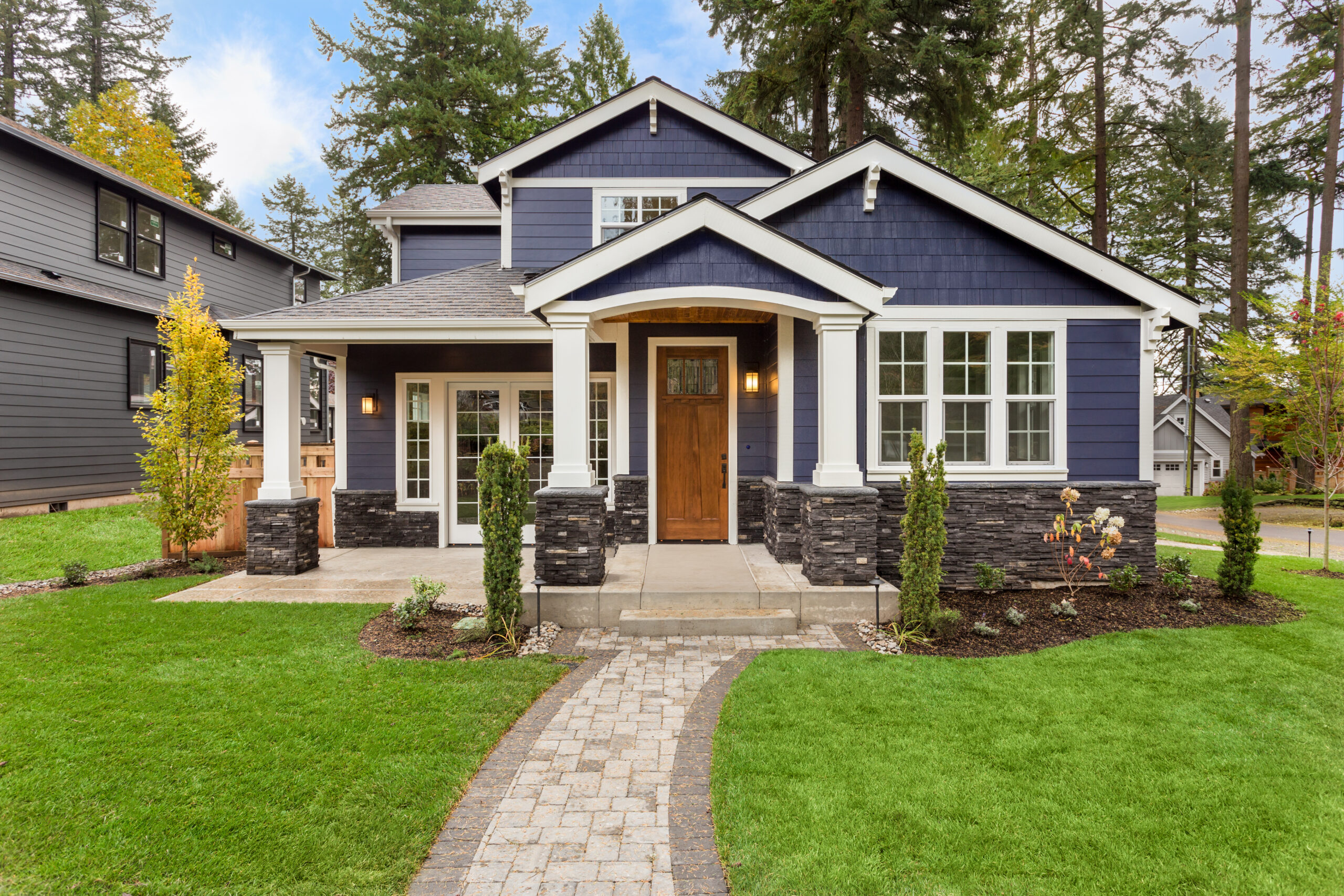There’s never been a better time to be a house-flipper than now. The housing supply is low, demand for home buying is high, real estate prices are increasing, and the lending environment is more competitive than ever as lenders scramble to get borrower business. What this means for real estate investors is you can choose your strategy. Whether you favor fix-and-flips, rental properties, or ground-up builds, there are great opportunities to maximize ROI almost anywhere in the country.
In the hard money market, interest rates are compressing, creating more great opportunities for investors. While there’s no centralized database for hard money loans, making it difficult to get an overview of the rates in the market, there is evidence that interest rates are getting lower and favoring real estate investors. It’s not hard to see why.
Cash Is King in Real Estate Investing
While opportunities abound, the competition is stiff. Imagine a lion’s den with two dozen roaring kings of the jungle and one piece of steak to feed them all. That’s the current real estate market. But the lions know there’s more meat. It’s just not in the den with them. Rather, it’s sitting in the back of a huge dump truck poised to fall for the hungry lions at some undesignated time in the future. Until it’s dumped, the lions will brawl for dinner.
It’s hard to find good deals. Everyone wants one because buyers are waiting to pounce on a home the moment it hits the market. High demand + low supply = investors sitting on piles of cash.
ATTOM Data reported in September that flipped homes purchased with cash in the second quarter of 2021 made up 59.2 percent of the market, up from 57.6 percent in the second quarter of 2020. While the number was slightly down from the previous quarter this year, the long-term trend is that investors are buying fix-and-flips with cash rather than financing. That’s driving hard money interest rates down as lenders compete for more market share.
In Q3 2019, for instance, 58.5 percent of the flipped homes were bought with cash. In the same quarter a year before, it was 54 percent. Fast forward to Q1 2020 and the percentage of flipped homes purchased with cash was 59.5 percent. The percentage of flipped homes bought with cash hit 59.2 percent in the first quarter of this year and remained static in Q2. The third-quarter results have not been published yet, but I suspect that we could see another increase in cash purchases.

In 2020, the annual percentage of flipped homes purchased with financing declined for the first time in a decade. Financed fix-and-flips went down from 42.3 percent in 2019 to 41.7 percent in 2020. The number was 41.8 percent in 2018. Speaking of financed fix-and-flips, 40.8 percent of the flipped homes in Q2 this year were bought with financing versus 42.4 percent in the same quarter last year. Clearly, there’s a trend.
How Cash Buying is Driving the Hard Money Market
Sharestates is not the only one noticing the trend. Chris Wright wrote on the Millionacres blog in September last year:
Financed flips have fallen over the past couple of years, too. It seems more investors are opting to buy their homes with cash — likely due to the increased competition many markets are seeing.
Wright also noted increased flipping activity and a downward trend in investor profits in recent years. Liz Brumer-Smith, a real estate investor and contributor to The Motley Fool, believes 2022 will be more of the same. Specifically, she expects home values to rise at a slower pace, profits to continue declining for investors, supply and labor shortages will continue to plague flippers and builders, and the competition for deals will remain hot.
If profits are declining, many investors will stick with an all-cash strategy to cut expenses.
This trend isn’t evident just in the single-family market. It’s also hit the value-add multifamily housing market. According to commercial lender Liberty SBF’s CEO Alex Cohen, there is high bridge loan demand as investors continue executing more deals. He says:
The foundational supply-demand imbalance in multifamily will keep fueling rent growth, serving as a strong counterbalance to rising interest rates.
While the dynamics are different in multifamily compared to single-family fix-and-flips, it’s notable that interest rates are moving across the board. Mortgage rates are inching up. In the single-family fix-and-flip market, housing supply and demand, rising labor and materials costs, and increased competition, are driving the market. Since house-flippers are buying more with cash, lenders are forced to get creative and more competitive with their loan products. Hence, lending rates are going down as they attempt to attract more loan customers. It’s creating a vicious cycle that further favors investors.
On top of these factors, homeowners who want to buy a bigger house or upgrade their lifestyle may have to acquire a short-term bridge loan to buy a house before it exits the market if they can’t sell their existing home first. That’s a risky move, but in the current market, it could be the best alternative for some homeowners. Meanwhile, there’s more news on the COVID-19 front.
One More Factor Driving Interest Rates Down
In 2019, CoreLogic published a report on house flipping and profits. They found that house flipping was up across the board since the early 2000s, but the mindset of flippers was different. Before the financial crisis, much of the flipping activity was speculative. Today, the focus is on adding value to the property. CoreLogic concluded that this trend is likely due to more experienced and institutional flippers having an active presence in the space.
Flipping returns were on the rise in 2019 and were highest in areas with older housing. ATTOM Data’s Q2 report this year shows house flipping to still be on the rise while profits are declining. There’s no doubt this is due to the rising costs of labor and materials. But there could be one other factor impacting the fix-and-flip market in 2021 and going into 2022. Uncertainty.
 The 2020 pandemic caused a halt and a delay in real estate activity in much of the country. As real estate professionals got back to work in late 2020, the cost of materials started rising. Many projects were delayed due to the shortage of labor and the rising cost of supplies. Yet, the industry was optimistic. As the omicron variant of the coronavirus continues to spread and make headlines, more homebuyers are opting not to buy now. This has particularly been a factor in the luxury home market.
The 2020 pandemic caused a halt and a delay in real estate activity in much of the country. As real estate professionals got back to work in late 2020, the cost of materials started rising. Many projects were delayed due to the shortage of labor and the rising cost of supplies. Yet, the industry was optimistic. As the omicron variant of the coronavirus continues to spread and make headlines, more homebuyers are opting not to buy now. This has particularly been a factor in the luxury home market.
So far, it hasn’t been a huge factor, but if the omicron news cycle is long and grows larger, it could affect a lot of things. We could see a slowdown in flipping activity.
Every lion wants a piece of that meat right now. There’s a mad race to the next big deal. No one knows how many homes will be on the market next week or next month. No one knows what the price of materials will be next week or next month. And no one knows what the prices of homes will be. All we see are the trends—up in prices, up in demand, up in competition, and steady in housing supply. Lenders are looking to make a deal and are ready to offer the most competitive rates in a long time. In that environment, the fastest and the strongest will get to the meat first.
There’s a reason for more optimism. There are pockets of hot flipping activity across the nation. Serious house-flippers are specializing in neighborhoods and types of properties. Interest rate compression in the hard money market when house prices are on the rise benefits investors who find the best deals the fastest. The way to get good rates on your next hard money loan is to ensure you can back the project you loan against and buy at the right price. A more favorable LTV will get you a more favorable interest rate. That, in turn, will put more money in your pocket.
There may be uncertainty in the market, but the forces are in favor of investors with a good business plan and a strong exit strategy.
For more information about Sharestates’ loan programs Click Here


